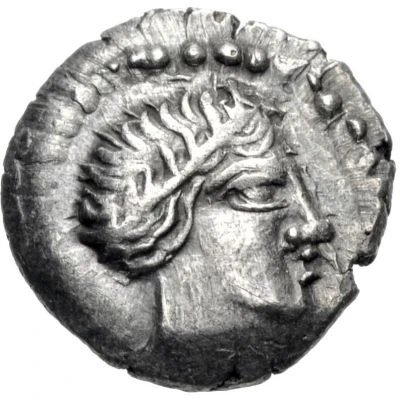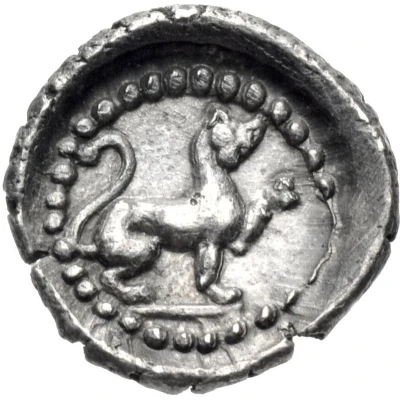


© Classical Numismatic Group, Inc.
Hemiobol 400 BC - 380 BC
| Silver | 0.33 g | 8.5 mm |
| Issuer | Tlos (Lycia) |
|---|---|
| Type | Standard circulation coin |
| Years | 400 BC - 380 BC |
| Value | Hemiobol (1⁄12) |
| Currency | Drachm |
| Composition | Silver |
| Weight | 0.33 g |
| Diameter | 8.5 mm |
| Shape | Round (irregular) |
| Technique | Hammered, Incuse |
| Orientation | Variable alignment ↺ |
| Demonetized | Yes |
| Updated | 2024-10-10 |
| Numista | N#403190 |
|---|---|
| Rarity index | 100% |
Reverse
Lion seated right, head facing, raising forepaw, within incuse circle.
Comment
Müseler VII, 17; otherwise, unpublished.
Interesting fact
The Hemiobol coin was used as a form of currency in the ancient city of Tlos, which was located in the region of Lycia in modern-day Turkey. The coin was made of silver and weighed approximately 0.33 grams, which was a relatively small amount compared to other coins used in the region at the time. Despite its small size, the Hemiobol was an important part of the local economy and was used to purchase everyday goods and services. It's interesting to note that the Hemiobol coin was also decorated with intricate designs, including images of gods and goddesses, animals, and other symbols that held cultural significance for the people of Tlos. These designs not only added to the aesthetic value of the coin but also served as a way to convey important messages and ideas to the people who used them. Overall, the Hemiobol coin is a fascinating example of the rich cultural heritage of ancient Tlos and the importance of currency in the daily lives of people living in that time period.
Price
| Date | Mintage | VG | F | VF | XF | AU | UNC |
|---|---|---|---|---|---|---|---|
| ND (400 BC - 380 BC) | - | - | - | - | - | - |
Values in the table are based on evaluations by sales realized on Internet platforms. They serve as an indication only for Hemiobol (400 BC - 380 BC) coin.